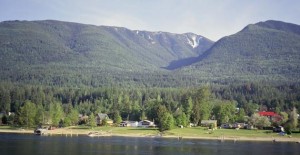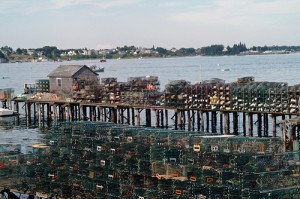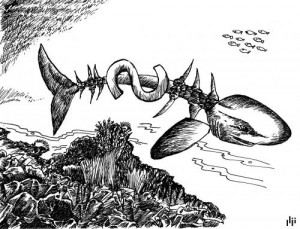
Ever stop to think what divides the first from the third world? Why don’t we ever hear about the second and why don’t countries move between categories as they develop? Well, because the categories are historical – the second world is reserved for post-soviet countries attempting to rebuild governance. The first world is reserved for those who shone through as leaders at the end of World War 2. The third world – everybody else. But what does that mean for development research? And what about those places within our own country without running water and electricity?
![]() Looking inward to the researcher’s own countries means questioning the benefit of some institutions that are part of the dominant narrative of success in those countries. Before any differences are made explicit between investigation of the First and Third World, there is the question of outsider/insider position that must be attended to. Identifying and challenging assumptions as an insider may prove much more difficult than analysis of a foreign society as an outsider (Perin 1977). For example, community forestry in Canada was assumed to not exist because Canada is fully embedded in a capitalist economy, but was discovered to be successfully functioning in British Columbia, largely due to a regional difference in values diverging from capitalism (McCarthy 2006).
Looking inward to the researcher’s own countries means questioning the benefit of some institutions that are part of the dominant narrative of success in those countries. Before any differences are made explicit between investigation of the First and Third World, there is the question of outsider/insider position that must be attended to. Identifying and challenging assumptions as an insider may prove much more difficult than analysis of a foreign society as an outsider (Perin 1977). For example, community forestry in Canada was assumed to not exist because Canada is fully embedded in a capitalist economy, but was discovered to be successfully functioning in British Columbia, largely due to a regional difference in values diverging from capitalism (McCarthy 2006).
 Perin (1977) suggests analyzing controversies to identify such assumptions that may also inherently be part of the inside researcher’s worldview. First World political ecologists have focused on controversies, largely looking at land use or resource management controversies. In the process, they have identified different processes at work in the First World than the Third World. These differences add a few key concepts to the political ecology toolbox: a need to explicitly recognize heterogeneity in a seemingly unified nation (St. Martin 2001), the role of a strong central state (Walker 2003), the role of larger capitalist economy and culture (Escobar 2004), and the process of rural gentrification (Schroeder 2005).The first difference is the need to explicitly recognize heterogeneity within First World nations. This was exemplified by McCarthy’s forests and more broadly in “alternatives” available for First World citizens (Bryant and Goodman 2004). The assumption previous to completing political ecological analyses in the First World is that the strong role of both centralized federal and state governments would homogenize internal communities. However, differences in enforcement and local autonomy create distinct regions within First World countries (St. Martin 2005). The difference between this and distinct regions elsewhere is that they may be working in direct conflict to state and federal regulations, so may be deliberately hidden or more difficult to access than distinct regions in the Third World (McCarthy 2006).
Perin (1977) suggests analyzing controversies to identify such assumptions that may also inherently be part of the inside researcher’s worldview. First World political ecologists have focused on controversies, largely looking at land use or resource management controversies. In the process, they have identified different processes at work in the First World than the Third World. These differences add a few key concepts to the political ecology toolbox: a need to explicitly recognize heterogeneity in a seemingly unified nation (St. Martin 2001), the role of a strong central state (Walker 2003), the role of larger capitalist economy and culture (Escobar 2004), and the process of rural gentrification (Schroeder 2005).The first difference is the need to explicitly recognize heterogeneity within First World nations. This was exemplified by McCarthy’s forests and more broadly in “alternatives” available for First World citizens (Bryant and Goodman 2004). The assumption previous to completing political ecological analyses in the First World is that the strong role of both centralized federal and state governments would homogenize internal communities. However, differences in enforcement and local autonomy create distinct regions within First World countries (St. Martin 2005). The difference between this and distinct regions elsewhere is that they may be working in direct conflict to state and federal regulations, so may be deliberately hidden or more difficult to access than distinct regions in the Third World (McCarthy 2006).

This definite link to upper-level governance adds another layer of complexity in the form of cross-scale linkages, emphasizing the need to “look up” in analysis but not lose sight of the importance of the local in the shift to First World research (Robbins 2002). These systems may also be more recently created, nonindigenous cultures, adding to the difficulty in identifying their existence and questioning the identity of the ‘local’ (Walker 2003). For instance, since lobsters have become abundant in the northeastern United States, a system of ‘lobster gangs’ and v-notching to protect gravid females has emerged despite strong top-down mandates from the Northeast Atlantic Fisheries Management Council and the state of Maine (McCay and Acheson 1987). Such cases provide insight into the importance of heterogeneity of worldviews and values (even within a country with strong central management) to successful resource management.
Through the difficulty in identifying heterogeneity, the role of a strong central government in First World political ecology becomes apparent. Although in some cases the central government is ineffective, it still plays a large role in the lives of First World citizens. Even when examining alternatives like the lobster gangs in Maine or the community forests in British Columbia, there are still processes between higher level government and local authority occurring to allow for such alternatives to exist. To a certain degree, alternatives are the exception to the rule (of central government). Strong central government has the ability to eliminate local systems of authority or to constrain the bounds within which they can work (McCay and Acheson 1987) by marginalizing the local (McCarthy 2002).
In addition, most First World states provide a social safety net for communities (Walker 2003) that removes the incentive to locally manage for resource uncertainty and variability (Lansing 2006) and reliance on the community for subsistence. The addition of a strong central government to the political ecology framework was key in shifting the field away from focus on localities to emphasis considering the local as embedded in larger processes (Walker 2003). This shift has been important in both First and Third world political ecology studies in encouraging the study of the politics of scale.

One major influence of the strong central government of First World nations is the resultant influence of capitalism (currently, all First World national economies are capitalist). As countries develop, they tend to participate in global capitalism, which is associated with particular values and practices revolving around the self. Escobar (2004) argues that global market processes are now in control of national economies, balancing the “economic-military-ideological” order that heightens already present marginalization and suppression of local knowledge and culture with self-organizing social movement networks that counter globalization and engage in the politics of difference. These processes have framed many localities of difference as “alternatives”, such as those with conservation or community goals (Bryant and Goodman 2004) while creating the narrative of the First World citizen as the rational economic actor (Schroeder 2005). This juxtaposition exacerbates the marginalization of the local created by strong central government (Walker 2003) and forces citizens to balance the desire to be in the mainstream with the benefits of participating in an alternative economy. This balance is often not present in the Third World, where the role of global capitalist processes is not as prominent.
Large-scale processes resulting in heterogeneity, strong central government, and capitalism present in the First World all lead to a more complex definition of “site” for a given political ecological study. These forces also help produce a different type of “rural” than those described in Third World studies. Given temporal distance from urbanization in the First World, the reverse process is occurring. People now have the chance to return, mostly as retirees, to rural communities after making a living in an urban setting. The resultant process of rural gentrification cannot be ignored (Schroeder 2005). Walker (2003) concludes of Western land use, “the irony of the New West is that newcomers attracted by diverse imaginaries of rural lifestyles often make real rural livelihoods unviable”. ‘Rural’ is no longer necessarily linked to a natural-resource dependent lifestyle. These newcomers often introduce new values and ethics to the community and tie the rural and urban together in new ways. The process, however, is not solely restricted to First World rural communities as “extralocals fueled by outside dollars transform natural environments around the world by the same processes” (McCarthy 2002).
The differences observed between the First and Third Worlds are all a product of development, so they are not only important to consider for the First World but will become increasingly important as the Third World progresses through its own development. As Escobar (2004) points out, the process of globalization is affecting all countries by adding yet another scale of analysis with the potential to interact with local, regional, and national processes. The First World studies have made apparent the importance of considering these factors, but they have also highlighted the importance of context and not making assumptions based on first approximations (e.g. ‘First World’ or ‘rural’). Future work, likely in urban settings, will likely highlight more assumptions that need to be questioned and empirically defined as context.
Choice References:
Perin, C. (1977). Everything in its place: Social order and land use in America, Princeton Univ Pr.
McCarthy, J. (2006). Neoliberalism and the Politics of Alternatives: Community Forestry in British Columbia and the United States Annals of the Association of American Geographers, 96 (1), 84-104 DOI: 10.1111/j.1467-8306.2006.00500.x
Walker, P. (2003). Reconsidering ‘regional’ political ecologies: toward a political ecology of the rural American West Progress in Human Geography, 27 (1), 7-24 DOI: 10.1191/0309132503ph410oa
Escobar, A. (2004). Beyond the Third World: imperial globality, global coloniality and anti-globalisation social movements Third World Quarterly, 25 (1), 207-230 DOI: 10.1080/0143659042000185417
Bryant, R., & Goodman, M. (2004). Consuming narratives: the political ecology of ‘alternative’ consumption Transactions of the Institute of British Geographers, 29 (3), 344-366 DOI: 10.1111/j.0020-2754.2004.00333.x
The second world was the post-Stalin Soviet Union and associated countries — countries where people weren’t starving, but not living particularly well.